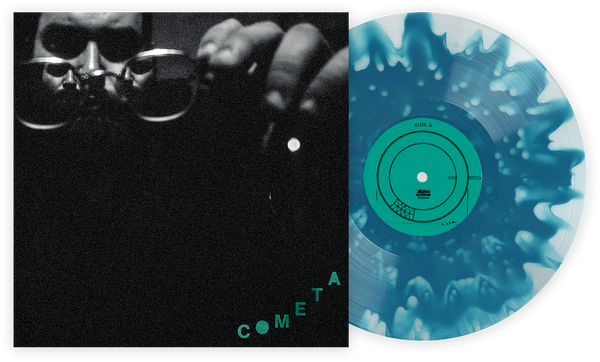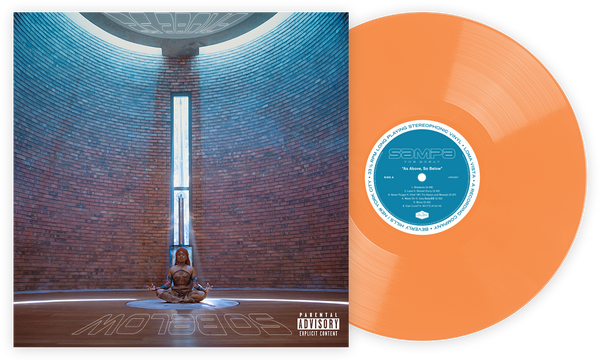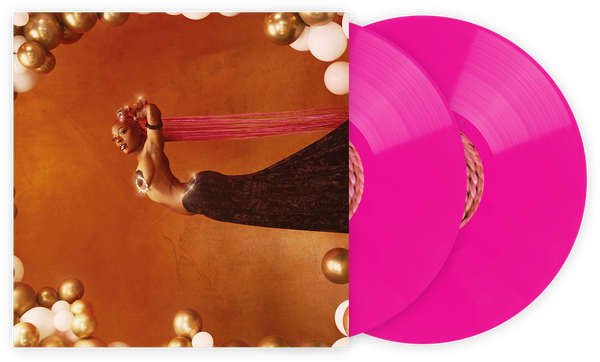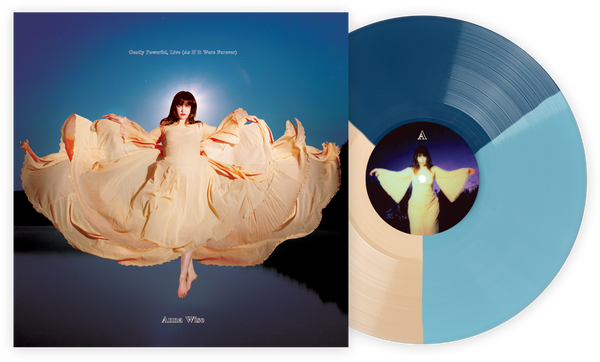An Abridged History Of The Animated Band
We Unpack The History Of Music Being Sold Via Cartoons, And Vice Versa
You may remember Gorillaz first for their look—specifically the fact that they were cartoons, four strangely rendered misfits frowning in baggy clothes while riding in a camouflage jeep. Or, if you heard them only through radio, the name might first recall their peculiar sound, touching on rap, dub, indie rock and electronica that way tourists pose for pictures at America's Four Corners, one limb in each state. Still, I will always remember the group for what they were to me in 2001: the most controversial band in my fifth grade class.
Pop music had been moving quickly in those years. The record industry was reaching an all-time high, pushed upward by the standardization of the compact disc and the disposable income produced by the bubble economy. A year earlier, 'NSYNC's No Strings Attached had sold 2.4 million copies in its first week. Among the boys I knew, the boy band's only threat came from usurpers like Eminem and Kid Rock, TRL stars who performed rebellion exactly the way elementary school students imagine it—mostly by saying the F-word. I will forever cherish the memory of the afternoon I spent with my old friend Gary, tallying every swear in Kid's Devil Without a Cause and arguing over whether "ass" should be included in our count.
I lost this argument. But with Gorillaz, a much more complicated argument began to unfold. They were, as I recall, the first band I was ever made fun of for liking. My friends were already fluent in the language pop-entertainment spectacle—its fakeness, its inhumanity, its cartoonishness. At the time, this seemed normal. Gorillaz, however, made it seem less so, turning that artificiality in on itself, making it so obvious that it was no longer possible to ignore.
Just as Napster, also working behind an odd cartoon avatar, used files from CDs to undermine the record industry from within, so Gorillaz presented a new challenge for young music fans who didn't know much else. Thus began some of my first arguments about the nature of pop: "Who makes the songs?" None of us knew Blur, or Damon Albarn, Gorillaz's IRL string-puller, and thus we had no idea. Being in fifth grade meant that we couldn't rule out the possibility that the cartoons were somehow making the music themselves. "What if you went to their concert and a bunch of cartoons came out onstage?" I specifically remember Gary asking that one, and I specifically remember being completely stumped. "How can you like a band that's just cartoons?" Another tough one. For now, let's table it.
Popular music has always been good at producing inversions. What had been fresh quickly becomes trite. Sounds that had grown stale return cooler, more exciting than ever. Audiences push for new songs, but the songs also remake their audiences. Sometimes you realize that the most subversive thing is the one right in front of you. Other times, years later, you realize that the cartoon band that blew your mind when you were a kid is really part of a tradition that begins with chipmunks singing Christmas carols.
In 1958, the producer Ross Bagdasarian, Sr., stage name David Seville, recorded "Witch Doctor," a straight-forward rock song about woman who wouldn't return the singer's affection. In the verse, the witch doctor of the title reveals a magic spell that will make the woman fall in love with the singer; the chorus is the spell, pitched up in a style we've come to associate with singing chipmunks and Kanye West beats from the early 2000s.
The single stayed at Number One for three weeks, and on Halloween of the same year, Seville recorded a holiday-themed follow-up, "The Chipmunk Song (Christmas Don't Be Late)." This time, he turned the squeaky voices into individual characters, rodents named Simon, Alvin and Theodore, and included their images on the sleeve of the 45. So were born Alvin and the Chipmunks. They are, of course, still with us, as is the combination of love and hate that greeted their reception. "The Chipmunk Song" won three Grammys and returned Seville to the top of the Hot 100. Yet when it faced American Bandstand's "Rate-A-Record" jury, it received the lowest score possible.

The golden age of the cartoon band began about a decade later, its biggest hits faced with the same combination of success and disgust. But pop doesn't tally the No votes, only the Yesses, and in 1969, year of Abbey Road and "Everyday People," the Archies' "Sugar, Sugar" was the top song in both the U.S. and U.K. Written by 16-year-old Andy Kim and Brill Building mainstay Jeff Barry, the song was originally sent to live-action TV band the Monkees. They passed, and so it went to an animated TV band: the Archies, a group composed of the kids from the Archie comics.
They didn't really exist, but over the next few years the Archies stood as one of the most imitated bands in pop. Suddenly, kids around the country learned that their favorite Saturday morning cartoon characters secretly doubled as skilled musicians, and a handful of shows attempted pop crossover. Bob Stanley, in his book Yeah! Yeah! Yeah!: The Story of Pop Music from Bill Haley to Beyoncé, provides the following list of Archies-style spin-offs: the Groovie Goolies, the Hardy Boys, Butch Cassidy and the Sundance Kids, the Banana Splits ("actually live action with actors in animal costumes and dubbed speaking voices"), the Cattanooga Cats, the Chan Clan, the Neptunes and Josie and and the Pussycats, who were originally published in a series under Archie Comics.
Even the Harlem Globetrotters got in on the action, supplementing their own cartoon series with a cartoon album—an album based on and illustrated with their cartoon personas rather than their real-life ones. In a song that remains relevant, a Jackson 5 rip-off penned by Neil Sedaka, they brag about using their hoop skills to jump over border walls as they try to bed women from around the world. The Jackson Five, incidentally, were themselves recast as cartoon band for their TV series The Jackson 5ive. The Osmond Brothers, the Partridge Family and the Brady Bunch also underwent the transition to cartoon band as well. The Sugar Bears, meanwhile, became the first cartoon band based on characters originally created to advertised breakfast cereal. (Their LP is said to be a cult classic.)
In the anthology Bubblegum Music is the Truth, the television writer Mark Evanier explains why his industry found these crossovers so useful. "Because of the way the cartoons were sold to the advertisers, frequently sold before the show even was finished, there became a very strong interest in programming cartoon shows that existed in other media…. There was a dislike of shows that were 'only' shows."
Record companies found these acts similarly advantageous. "One of the things that made the Archies the envy of a lot of other people in the music business was that the Archies were anonymous, the Archies were owned. The Archies couldn't hold out for more money."
So the fantasy worlds grew. Records, once intended to preserve the sound of real life musicians, were now leading kids into fictions that pushed them to the side. The trend seemed to represent every excess of the top-down culture industry: fake artists playing anodyne songs, pushed onto kids. For those concerned with rock's place in the counterculture, groups like the Archies presented an enigma. "There's something inherently even violent about [rock and roll], it's wild and raw and all this," the critic Lester Bangs told interviewer Sue Matthews, asked about whether rock could be inherently subversive. "On the other hand, the fact is that 'Sugar Sugar' is great rock and roll, and there’s nothing rebellious about that at all. I mean, that's right from the belly and heart of capitalism."
Bangs names a tension that has helped drive pop music ever since. Subcultural arbiters have often tried to enforce purity, insisting that it can only be one or the other, raw violence or sugar sugar, but it's striking how many artists have allowed these two extremes to sit side-by-side, unresolved, just as Bangs did. After the Archies, it took Bob Marley and the Wailers less than a year to record their own reggae cover of "Sugar, Sugar." Years later, even more unexpectedly, the Marley embellished the hook to "Buffalo Soldier," a song about the so-called Negro Calvary regiments that fought with the United States Army in the American Indian Wars, with some La-La-Las that immediately recall the theme song for the Banana Splits.
Thus bands like the Archies made an unexpectedly profoundly impact on pop music. But what of the Archies—the cartoons—themselves? For most of the last 50 years, the concept of the cartoon band has been in disrepute, rarely revived even as golden age groups like Josie and the Pussycats became the source material for live-action remakes. (As if to prove the earlier point, Josie and the Pussycats were themselves recast as punks.) Jem, a creation of Hasbro and Marvel, remade the cartoon band for the mid-'80s; this time, the specter of punk manifested itself in Jem's rivals, the Misfits. A Canadian group called Prozzäk, the name inspired by the antidepressant, found some success in the late '90s. Yet the cartoon band didn't return to the fore of popular music, its forum the fifth grade lunch table, until Gorillaz released "Clint Eastwood" in the spring of 2001.
Still, the return was an ironic one. For animated bands like the Archies, animation tended to simplify the presentation of the music. This was music without musicians, and thus music that was unburdened by authorship in the traditional sense. "Sugar, Sugar," though technically the product of a TV show, seems to float in its own realm, with no connection to personal expression of a particular singer. As a medium for the music, the Archies left as few marks as possible.
Gorillaz went in the other direction, using animation not to free their songs but to complicate them further. The cartoons set up a game, and it's never been clear how seriously the game is being played. It's hard to tell just how much distance the irony is creating, in part because both the distance and the irony are both always changing.
This was true all the way back to "Clint Eastwood," a tune that expresses neither the joy of the pop song nor the anguish of the power ballad. More prozak than even Prozzäk, it's hard to say the song expresses much at all. The character 2D, voiced here by Damon Albarn, drifts down a paranoid trip-hop beat; his best remembered line—"I ain't happy, I'm feeling glad"—describes a spiritless sort of SSRI normal, an artificial tranquil after pop's bubble burst.
Albarn first dreamed up Gorillaz in the mid-'90s, when he was roommates with the illustrator Jamie Hewlett, creator of the comic Tank Girl. The friends envisioned their project as a boy band parody. This frequently came up in Gorillaz's early interviews, but, in another meta trick, Albarn had the characters themselves object to his idea.
"Because we're cartoon characters, I'm sure we'll come up against some prejudice," the fictional bassist Murdoc "told" Spin, who in turn described him as the "Lou Pearlman-like mastermind" behind the group. "Don't compare us to boy bands," he continued. "We ain't no 'N Sync."
This is another thing that makes Gorillaz unique: The old cartoon bands knew their place, and they certainly didn't contradict human interlocutors. They were, for the most part, confined to records, television and perhaps comics or advertising, maybe lunch boxes too. Gorillaz, on the other hand, give the impression that they'll continue to exist—work, hang out, spray paint—even after the magazine is closed and the videotape ejected. Thus they seem to live not in the mediums but in them, almost as if they were a product of media circulation itself.
Which is maybe just to say that they were the first animated band to take full advantage of the internet and explore its possibilities. In the only 2000s, the music press was particularly enamored with this aspect of the band, frequently stressing the interactive capability of gorillaz.com. The site's format recalled that of the web comic Homestar Runner; fans could explore Gorillaz's cartoon studio or log on to Gorillaz's cartoon computers, where they could read fictional intraband emails. Sample email: "2d, you are gay! MuRdoc."
More importantly, the Gorillaz website gave fans to the tools to remix the group's songs. Here the idea of the animated band pivots. At the end of the '60s, these groups exemplified the corporate control of popular culture. But in encouraging their audience to participate in music making, Gorillaz created the possibility of an anti-corporate animated band. This move places the concept of the animated band at the cutting edge of remix culture and the opening of a new creative economy diffused through the internet.
Gorillaz parodied the excess of the star system, the current state of pop. In doing so they showed where the cartoon band was heading next.

I attended my first animated concert in May of 2016. A cartoon did, in fact, walk out onstage, though I guess technically she was a hologram, and you could see a few virtuoso live musicians shadowed in the background. The artist—here the term bears even less weight than it did for Gorillaz—was Hatsune Miku, a holographic teenager who can be programmed using "vocaloid" computer software. In the words of her developer, the Japanese audio firm Crypton Future Media, Miku is a "beloved collaboratively constructed cyber celebrity with a growing user community across the world." Her name translates to "first sound of the future."
This future began in 2007, when the product was introduced in Japan. Other vocaloid programs had beat Miku to the market, but Miku was the first to add a visual element, a character to be the face of the music. Originally, the character was assigned a backstory not too far from the post-apocalyptic vision of Gorillaz and Demon Days. Miku, in this version, was doubly artificial: an android who learns how to sing in a near-future in which all previous songs had been lost.
As with Albarn and Gorillaz, Miku's creators wanted to build a world. But in the end they would ditch almost the entire thing. Why? Because if they provided less detail, then users could fill in more themselves. The decision proved prescient. Today, Miku users have uploaded over 100,000 songs created with her computer voice. And though the program was originally intended for professional musicians, it quickly proved most popular among amateurs, selling 40,000 units in its first year on the market. On the label Exit Tunes' popular vocaloid compilations, a sort of Now That's What I Call Hologram Pop! series, one installment of which topped has actually topped the Japanese album chart, songs created by amateurs and professionals sit alongside each other, totally interchangeable. The same is true at Miku concerts, where crowdsourced music is set to crowdsourced visuals created with a supplementary program called Miku Miku Dance.
In this way Hatsune Miku complete the shift heralded by Gorillaz. But more than announce the triumph of the amateur over the professional, Miku further blurs the distinction between the two. Even the traditional definition of the amateur—one who does something for enjoyment and not profit—quickly comes undone, for the Miku industry has generated substantial profits largely through the labor of so-called amateurs. In Japan, fan-made Miku images even adorn racecars, painted where American cars display the logos of McDonald's and Dow Chemical.
When Miku came to America, Crypton chose a Ryo tune, "World is Mine," as her theme. It's a massive song, maximalist in both its arrangement and surplus of hooks. There's some bubblegum in the giddiness of the chorus, but more than anything, the song is hard rock, glammed up to fit the strange future that Miku's name announced. While she sang, people in the crowd waved their glowsticks in unison. I felt thankful that I had decided against experiencing the show stoned. My fifth grade classmates would have been surprised to learn that it was, in fact, a pretty good show.
Nick Murray, formerly an editor at Rolling Stone and The Village Voice, has written about music for a handful of publications, several of which are now defunct. He lives in New York.
Join the Club!
Join Now, Starting at $44Exclusive 15% Off for Teachers, Students, Military members, Healthcare professionals & First Responders - Get Verified!








